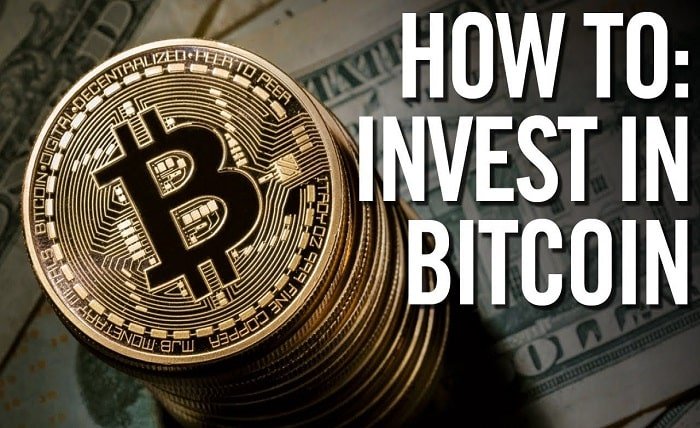How to Invest in Bitcoin: A Complete Guide for Beginners

Bitcoin, the world’s first and most famous cryptocurrency, has been making waves since its creation in 2009. As a decentralized digital currency, it has gained attention from investors, tech enthusiasts, and financial experts alike. Bitcoin has been considered by many as a hedge against inflation, a store of value, and even a speculative investment. If you’re wondering how to invest in Bitcoin and tap into the potential of this revolutionary asset, this guide will provide you with all the essential information.
This comprehensive article will walk you through the process of investing in Bitcoin, from understanding what it is to securing your investment and learning about the risks and rewards. By the end of this post, you’ll have a clear understanding of how to invest in Bitcoin and make informed decisions for your financial future.
What is Bitcoin and Why Should You Consider It?
Before learning how to invest in Bitcoin, it’s important to understand what Bitcoin is and why it has become such an attractive investment. Bitcoin is a digital currency that operates on a decentralized network, meaning it’s not controlled by any central authority, like a bank or government. Instead, Bitcoin transactions are verified through blockchain technology, which is a secure, transparent, and tamper-proof system.
Over the past decade, Bitcoin has grown from an obscure digital experiment to a widely recognized financial asset. Many investors see Bitcoin as a store of value, akin to gold, due to its scarcity. There will only ever be 21 million bitcoins in existence, making it deflationary and immune to inflationary pressures that affect fiat currencies.
How to invest in Bitcoin comes down to understanding these key factors. As an investor, it’s crucial to recognize Bitcoin’s volatility, its potential for high returns, and the risks associated with investing in a relatively new asset class.
Step-by-Step Guide on How to Invest in Bitcoin
1. Choose a Bitcoin Exchange
The first step in learning how to invest in Bitcoin is selecting a platform to buy it. Bitcoin is traded on cryptocurrency exchanges, where buyers and sellers connect. There are numerous exchanges available, but some of the most popular include:
- Coinbase: Known for its user-friendly interface, Coinbase is an excellent choice for beginners. It allows you to buy, sell, and store Bitcoin and other cryptocurrencies.
- Binance: Binance offers a wide range of cryptocurrencies and provides advanced trading features for experienced investors.
- Kraken: Kraken is one of the oldest and most trusted exchanges, offering a secure and diverse range of cryptocurrencies for investment.
- Gemini: Gemini is a regulated exchange based in the U.S. and is ideal for those seeking a secure, compliant platform to invest in Bitcoin.
When selecting an exchange, consider factors like security features, fees, available payment methods, and ease of use. Ensure that the exchange you choose supports Bitcoin and allows you to securely store and trade your assets.
2. Create an Account
Once you’ve selected a Bitcoin exchange, the next step in learning how to invest in Bitcoin is to create an account. Most exchanges will require you to provide personal information, including your name, email address, and proof of identity to comply with Know Your Customer (KYC) regulations.
During the registration process, you may be asked to set up two-factor authentication (2FA) to add an extra layer of security to your account. This will help prevent unauthorized access to your account and protect your investment.
3. Deposit Funds
After your account is set up, the next step is to deposit funds into your exchange account. There are typically several funding methods available, including:
- Bank transfer: A common method for depositing funds. It’s often free or low-cost but may take a few days to process.
- Credit/debit card: A faster method of funding your account but may come with higher fees.
- PayPal: Some exchanges allow you to deposit funds via PayPal, but fees may apply.
Once your funds are available in your exchange account, you’re ready to buy Bitcoin. However, before jumping into purchasing Bitcoin, consider the amount you want to invest and any associated fees.
4. Buy Bitcoin
To begin your Bitcoin investment journey, it’s time to make your purchase. On the exchange, you can typically place a market order or limit order. Here’s what each means:
- Market order: A market order buys Bitcoin at the current market price. It’s the fastest way to make a purchase, but the price may fluctuate slightly between the time you place the order and the time it is filled.
- Limit order: A limit order allows you to specify the price you’re willing to pay for Bitcoin. Your order will only be filled if the price reaches your specified limit.
As part of the process, you’ll be asked to review the order details, including the amount of Bitcoin you wish to buy and any transaction fees. Once you’re satisfied, confirm your order, and your Bitcoin will be credited to your exchange account.
5. Store Your Bitcoin Safely
One of the most important steps in how to invest in Bitcoin is securing your investment. While it’s convenient to store your Bitcoin on the exchange, it’s generally safer to transfer your Bitcoin to a private wallet.
There are two main types of wallets:
- Hot wallets: These are software wallets that are connected to the internet. They are user-friendly and suitable for small amounts of Bitcoin or frequent trading.
- Cold wallets: These are offline storage solutions like hardware wallets (e.g., Ledger Nano S or Trezor). Cold wallets are considered the safest way to store Bitcoin for the long term since they’re less vulnerable to hacking.
It’s essential to back up your wallet and keep your private keys (passwords) secure. If you lose access to your wallet’s private key, you may lose access to your Bitcoin permanently.
6. Monitor Your Investment
Now that you’ve invested in Bitcoin, the next step is to monitor your investment. Bitcoin’s price is highly volatile, meaning it can rise and fall dramatically within short time frames. Monitoring the market will help you stay informed and decide when to buy more, sell, or hold your Bitcoin.
There are various tools and apps available to help you track Bitcoin’s price and market trends. Some popular options include CoinMarketCap, Blockfolio, and CoinGecko. You can also set up price alerts to notify you when Bitcoin reaches a specific price level.
7. Stay Informed
To make the most of your Bitcoin investment, stay informed about the latest news and developments in the cryptocurrency space. Following reputable sources, such as CoinDesk, Bitcoin Magazine, and the Bitcoin subreddit, can help you keep track of market trends, new technologies, and potential regulatory changes.
The cryptocurrency market is highly speculative, and staying updated will help you make more informed decisions about your investments.
Risks and Rewards of Investing in Bitcoin
1. High Volatility
One of the biggest challenges when learning how to invest in Bitcoin is understanding the market’s volatility. Bitcoin’s price can fluctuate significantly, sometimes by thousands of dollars within a day. This volatility can be both a risk and a reward, as it provides opportunities for high returns, but it also exposes investors to the potential for substantial losses.
2. Security Risks
As a digital asset, Bitcoin is vulnerable to hacking, fraud, and theft, especially if you store it on an exchange or a hot wallet. While the Bitcoin network itself is highly secure, the platforms you use to buy, sell, and store your Bitcoin may be susceptible to cyberattacks. It’s essential to use secure platforms and implement good security practices, such as enabling 2FA.
3. Regulatory Uncertainty
The legal status of Bitcoin varies from country to country, and regulatory changes can impact the price of Bitcoin. While some governments have embraced Bitcoin, others have imposed strict regulations or outright bans. Staying informed about legal developments in your country will help you understand how regulatory changes may affect your investments.
4. Potential for Long-Term Growth
Despite its volatility, Bitcoin has demonstrated long-term growth potential. Over the past decade, its price has skyrocketed from a few cents to tens of thousands of dollars per Bitcoin. Many investors believe that Bitcoin’s scarcity, combined with growing institutional interest, will lead to significant price appreciation in the future.
Conclusion
Investing in Bitcoin can be an exciting and potentially rewarding endeavor. However, as with any investment, it’s important to approach it with caution, do your research, and understand the risks involved. By following the steps outlined in this guide—choosing the right exchange, securing your Bitcoin, and staying informed—you can increase your chances of success.
Bitcoin’s future remains uncertain, but its unique qualities as a decentralized and deflationary asset make it an intriguing investment opportunity. If you’re considering how to invest in Bitcoin, take the time to understand the market and make decisions based on your risk tolerance and financial goals.
FAQs
1. How do I buy Bitcoin for the first time?
To buy Bitcoin for the first time, you need to choose a cryptocurrency exchange, create an account, deposit funds, and place an order to purchase Bitcoin. Once purchased, you can store it in a secure wallet.
2. Is Bitcoin a safe investment?
While Bitcoin has demonstrated long-term growth, it is highly volatile and subject to risks like hacking and regulatory changes. It’s essential to understand these risks before investing.
3. Can I invest in Bitcoin with a small amount of money?
Yes, you can invest in Bitcoin with as little as a few dollars. Bitcoin is divisible, meaning you can buy fractions of a Bitcoin, known as satoshis.
4. How do I store my Bitcoin securely?
The safest way to store Bitcoin is by using a cold wallet, such as a hardware wallet, which is not connected to the internet and offers protection from hackers.
5. What should I do if the price of Bitcoin drops?
If the price of Bitcoin drops, it’s important to stay calm and evaluate your options. You may decide to hold your investment long-term, buy more at a lower price, or sell depending on your financial goals and risk tolerance.



